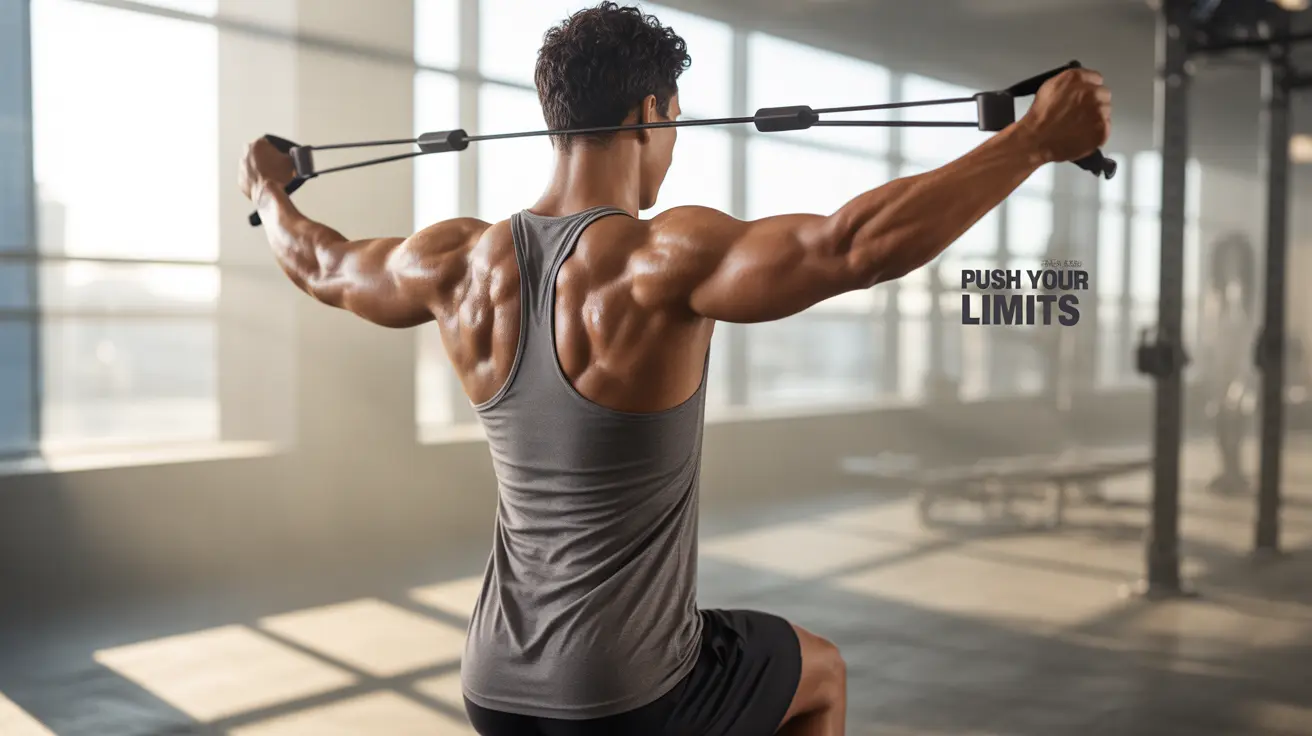Strong rear deltoids are crucial for maintaining proper shoulder function, improving posture, and achieving a balanced upper body physique. These often-neglected muscles play a vital role in shoulder stability and everyday movements, making targeted rear delt exercises essential for any comprehensive fitness routine.
Whether you're looking to enhance your workout performance, correct postural issues, or prevent shoulder injuries, understanding and implementing effective rear delt exercises can make a significant difference in your overall fitness journey.
Understanding the Rear Deltoids
The rear deltoids, or posterior deltoids, are one of three parts of your shoulder muscles. Located on the back of your shoulders, these muscles are responsible for shoulder extension and external rotation. They work alongside other upper body muscles to maintain proper shoulder alignment and support various pushing and pulling movements.
Benefits of Training Rear Deltoids
Regular rear delt exercises offer numerous advantages for both athletic performance and daily life:
- Improved shoulder stability and mobility
- Enhanced posture, especially for desk workers
- Better upper body symmetry
- Reduced risk of shoulder injuries
- Increased strength in pulling movements
- Enhanced athletic performance
Essential Rear Delt Exercises
Bodyweight Options
These exercises require minimal equipment and are perfect for beginners:
- Reverse Push-Ups
- Prone Y-Raises
- Standing Reverse Fly with Resistance Bands
- Wall Slides
Dumbbell Exercises
For those with access to weights, these exercises effectively target the rear deltoids:
- Bent-Over Reverse Fly
- Seated Reverse Fly
- Face Pulls with Dumbbells
- Single-Arm Reverse Fly
Cable Machine Variations
Cable machines provide constant tension for optimal muscle engagement:
- Cable Face Pulls
- Reverse Cable Crossovers
- High-to-Low Cable Pulls
- Standing Cable Reverse Fly
Proper Form and Technique
To maximize results and prevent injury, maintain these key form elements:
- Keep shoulders pulled back and down
- Maintain a slight bend in the elbows
- Focus on squeezing the rear deltoids
- Control the movement throughout the full range of motion
- Avoid using momentum to lift weights
Programming Guidelines
For optimal results, incorporate these training principles:
- Perform 2-3 rear delt exercises per workout
- Aim for 3 sets of 12-15 repetitions
- Train rear deltoids 2-3 times per week
- Allow 48 hours between training sessions
- Progress gradually with weight and volume
Frequently Asked Questions
What are some effective exercises to strengthen the rear deltoids for improved posture and shoulder stability?
The most effective exercises include reverse flyes (both standing and bent-over variations), face pulls, and prone Y-raises. These movements directly target the rear deltoids while promoting proper shoulder positioning and stability.
How do rear deltoid exercises help prevent shoulder injuries and promote overall upper body strength?
Strong rear deltoids help maintain proper shoulder joint alignment and balance the pulling forces across the shoulder complex. This balanced strength reduces the risk of injuries and supports better performance in upper body exercises.
What are the key benefits of including rear delt exercises in a regular workout routine?
Regular rear delt training improves posture, increases shoulder stability, enhances upper body aesthetics, reduces injury risk, and supports better performance in pulling exercises and everyday movements.
Can strengthening the rear delts help improve my posture if I spend a lot of time sitting at a desk?
Yes, stronger rear deltoids can help counteract the forward shoulder position common among desk workers. Combined with proper ergonomics and regular movement breaks, rear delt exercises can significantly improve posture.
What are some beginner-friendly exercises for targeting the rear deltoid muscles without heavy equipment?
Beginners can effectively target rear deltoids using resistance bands for reverse flyes, performing wall slides, doing prone Y-raises on the floor, and using light dumbbells for basic reverse fly variations.




